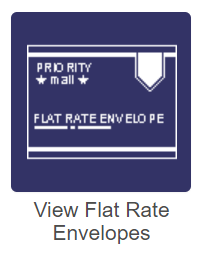The algorithm utilized to determine the paces for each race has been created by applying the results of research by C.T.M. Davies and Andrew D. Townshend, et al. on the effects of running on different grades, coupled with the extensive (and ongoing) analysis of thousands of mile-by-mile split times of various races. The application of this theoretical and practical research has enabled thousands of runners to keep on pace to reach their marathon goals.
Source Citations:
Davies, C. T. M. "Effects of wind assistance and resistance on the forward motion of a runner." Journal of Applied Physiology 48.4 (1980): 702-709.
Townshend, Andrew D., Charles J. Worringham, and Ian Stewart. "Spontaneous pacing during overground hill running." Medicine and science in sports and exercise 42.1 (2010): 160-169.
Each pace band is made out of a waterproof, tear-resistant synthetic paper. The material is similar to most bib number material, but thicker and more rigid than Tyvek. It doesn't wrinkle like bib paper either. Each band is lightweight, weighing approximately 3 grams (or about 1/10th of an ounce).
Our single-size band is held securely together by a small, secure snap. The snap ensures that the band will stay on your wrist the entire race. Our one-size-fits-all band is attached by an adhesive.
No. Unlike other bands or most homemade varieties, there is no lamination, no tape, and no paper that will get ruined if it gets wet. The band is made out of synthetic waterproof paper and the ink soaks directly into the paper, so it will not run. It will stand up to rain, heavy sweat, and even wayward aid station cups.
Currently, both marathon and half marathon distances are available.
Pace Band size is mainly a personal preference. Some people like it loose and some people find it more comfortable with a snugger fit.
Measure around your wrist and decide if you want a loose or snug fit. The band size is the actual circumference it will fit. For example, if you had a drinking glass that is 7" around (circumference), a 7" pace band will fit around it exactly.
One thing to keep in mind is that the snugger the fit, the more difficult it may be to rotate the band to see all the splits - especially when your wrist gets wet.
We also offer a one-size-fits-all band which fits wrist sizes from approximately 6.5" to 10".
There are three choices for shipping when checking out:
Standard: USPS Ground Advantage. Please allow 3-6 business days in most cases between your order date and race date. For example, if your race is on a Saturday, ordering by the previous Friday will ensure a timely delivery.
The image below shows estimated Standard delivery times according to the USPS.

Expedited: USPS Priority Mail. In most cases, Priority Mail will arrive in 2-3 days after shipping.
The image below shows estimated Priority Mail delivery times according to the USPS.

Express: USPS Priority Mail Express. Overnight shipping to many areas and 2 days to others.
Us the the USPS Shipping Calculator to determine Priority and Priority Express delivery times to your location.



In some cases, delivery time may be reduced. If you are unsure if your band could be delivered in time, send an email inquiry to see what the estimated delivery date would be.
Many runners have the Pace Bands delivered to their race hotel. We cannot guarantee delivery since it depends on both the USPS and hotel staff to deliver in a timely manner.
The specific course hill profiles and personal experience will dictate optimal Start and Pacing Strategies. For example, at the New York City Marathon, you may find yourself running 10-20 seconds slower than marathon goal pace during the first mile. However, you'll likely be back on pace (if you're not still caught up in the crowd) by the end of the second mile as you descend down the other side of the Verrazano-Narrows Bridge. Conversely, many Boston Marathons have been ruined by runners blasting down the first few downhill miles dozens of seconds faster than their planned marathon pace. These runners are often left with spent quads, leading to minutes lost on the Newton Hills and the long five mile downhill finish that follows.
In our article, Marathon Pacing Strategies, we detail the marathon pacing strategies recommended by running coaches and experts and reinforced by empirical evidence. It is great primer for anyone wanting to understand pacing strategies for the marathon.
Race Day Strategies for Marathoners is an article by Pete Pfitzinger, two-time Olympic Marathoner, exercise physiologist, and author of the very popular book Advanced Marathoning detailing his advice for proper marathon pacing.
Also, in the article, Pace Yourself, coach and exercise physiologist, Greg McMillan and Ross Tucker, exercise physiologist at the University of Cape Town and Sports Science Institute of South Africa, outline methods for determining your goal marathon pace and in-race pacing strategies.
For consistency, only courses certified by the USATF, Athletics Canada, or AIMS are used.